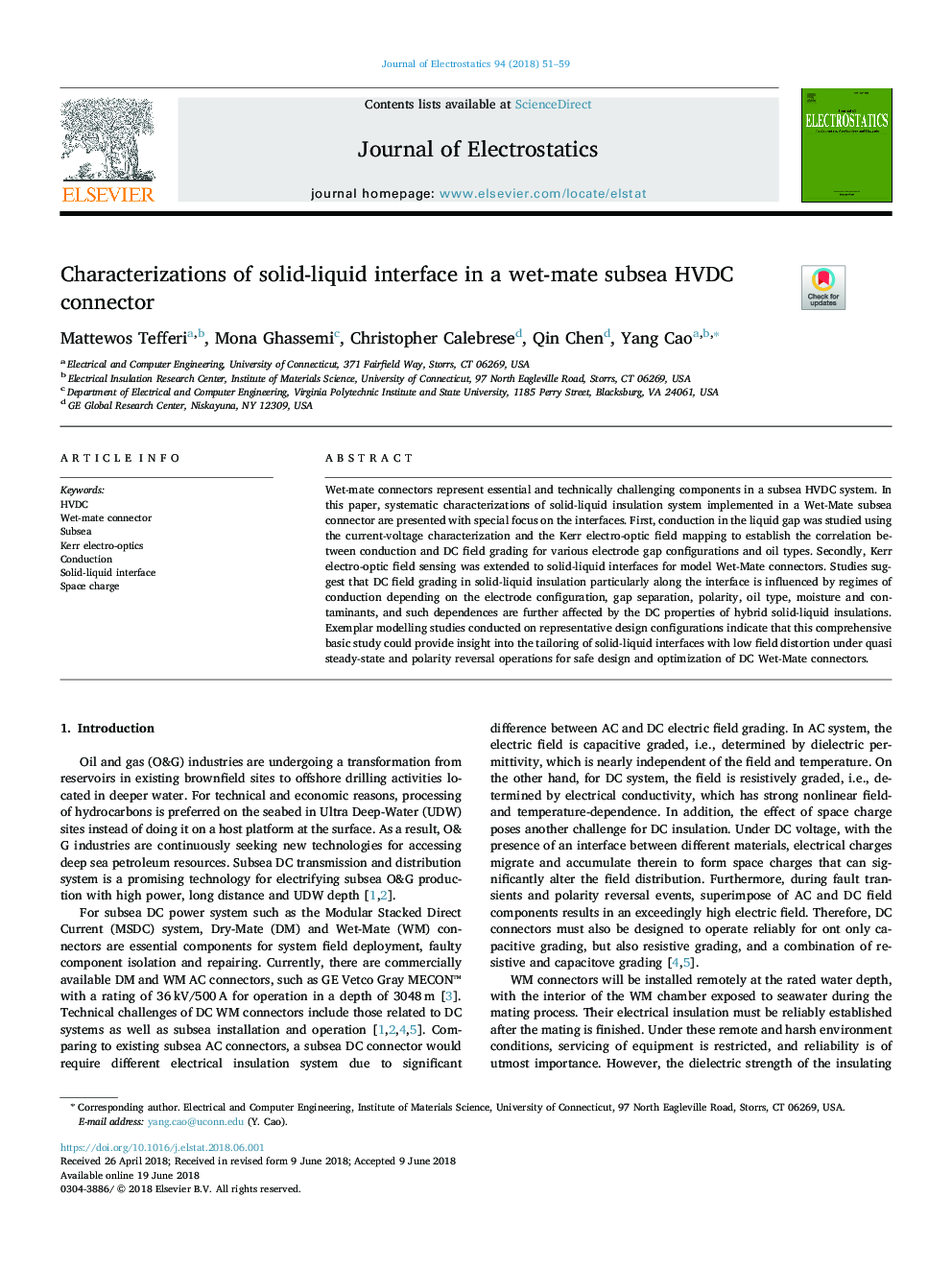| Article ID | Journal | Published Year | Pages | File Type |
|---|---|---|---|---|
| 7117084 | Journal of Electrostatics | 2018 | 9 Pages |
Abstract
Wet-mate connectors represent essential and technically challenging components in a subsea HVDC system. In this paper, systematic characterizations of solid-liquid insulation system implemented in a Wet-Mate subsea connector are presented with special focus on the interfaces. First, conduction in the liquid gap was studied using the current-voltage characterization and the Kerr electro-optic field mapping to establish the correlation between conduction and DC field grading for various electrode gap configurations and oil types. Secondly, Kerr electro-optic field sensing was extended to solid-liquid interfaces for model Wet-Mate connectors. Studies suggest that DC field grading in solid-liquid insulation particularly along the interface is influenced by regimes of conduction depending on the electrode configuration, gap separation, polarity, oil type, moisture and contaminants, and such dependences are further affected by the DC properties of hybrid solid-liquid insulations. Exemplar modelling studies conducted on representative design configurations indicate that this comprehensive basic study could provide insight into the tailoring of solid-liquid interfaces with low field distortion under quasi steady-state and polarity reversal operations for safe design and optimization of DC Wet-Mate connectors.
Related Topics
Physical Sciences and Engineering
Engineering
Electrical and Electronic Engineering
Authors
Mattewos Tefferi, Mona Ghassemi, Christopher Calebrese, Qin Chen, Yang Cao,
